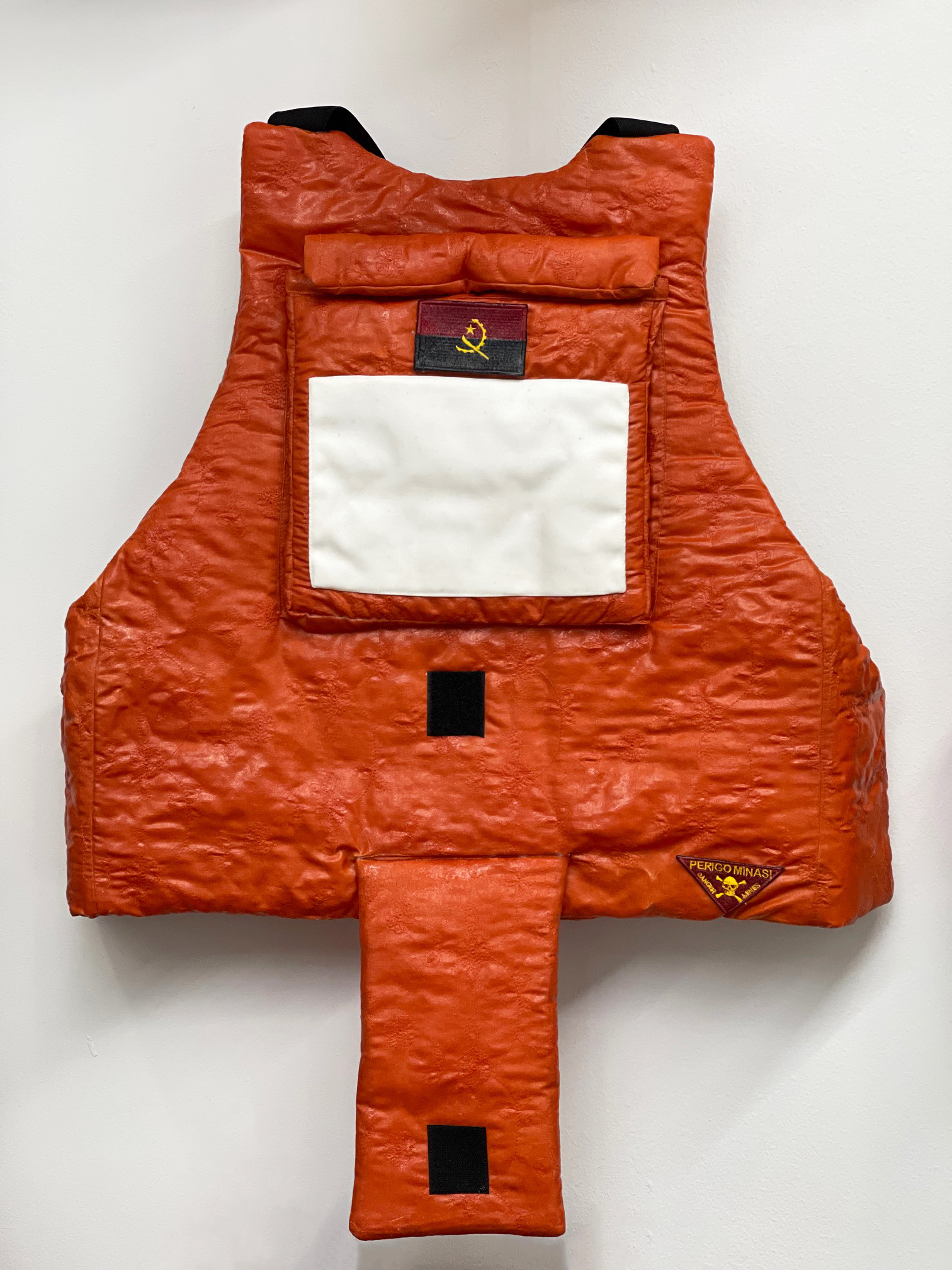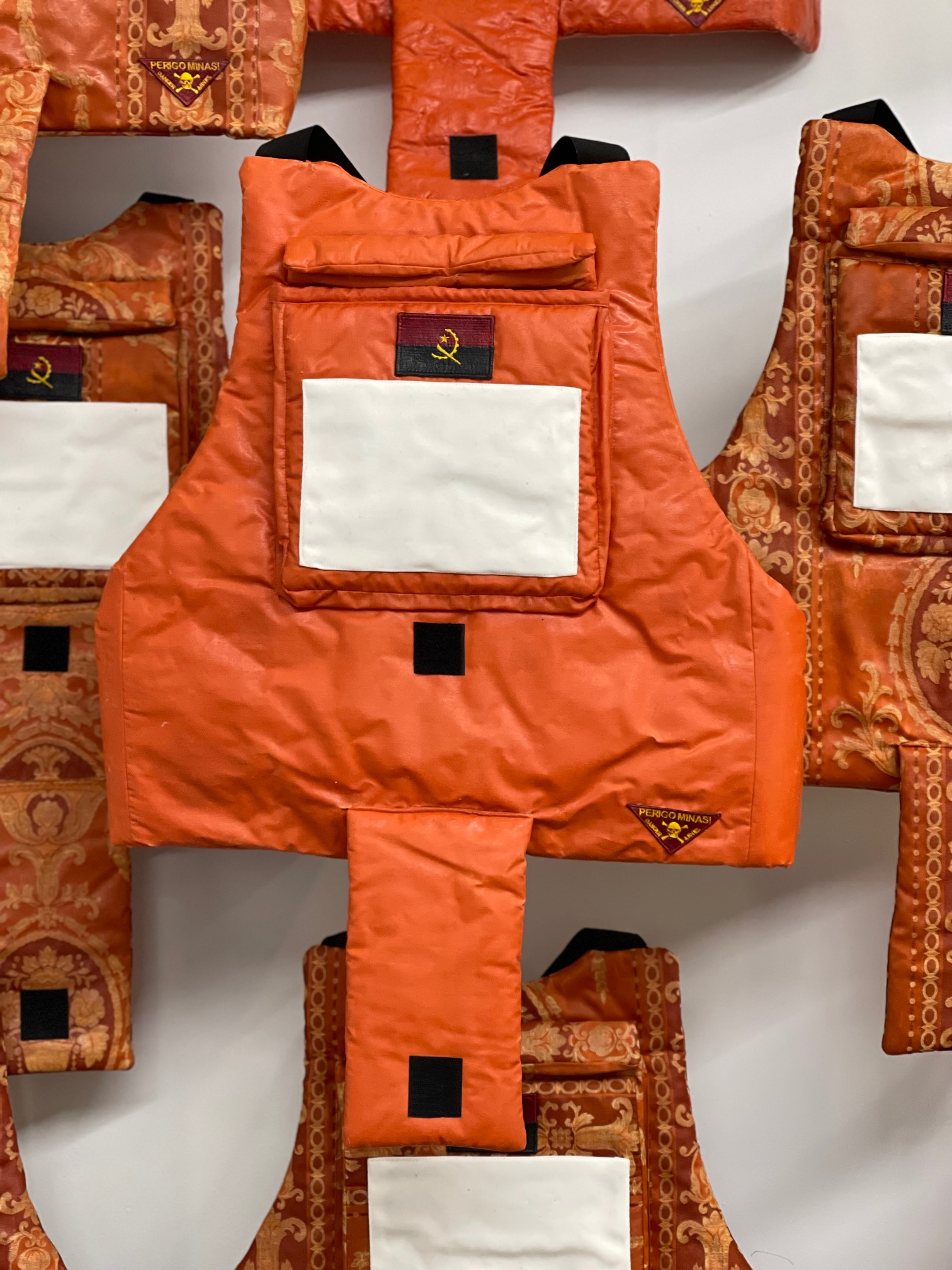IN HALO
WE TRUST Liste Art Fair Basel 2021
This project aims to be a work of investigation discoursing on the semiotic and factual presence of western institutions across the Globe, while discovering or revisiting information and un-archiving knowledge on the relations of coloniality between the West and African Nations since their independence. It probes into my research of a particular aspect of my most recent project An Angolan Archive (2020): the semiotic presence of saviour entities in the context of post-conflict territories, such as post-colonial nation-states, as is the case of Angola.
Gathering thoughts
As the investigation for a previous project (An Angolan Archive 2019- 2020 ) continued it became reoccurring in my methodologies, to isolate particular objects and further interrogate their meaning, networks and role. It was also recurrent that such items seemed to me as naturalized objects, that were originally implanted in the territory that now, lacking another way to describe I will refer to as Angola. Such objects have in common the fact that they become more familiar to the local landscape than to the geographies they come from. Often western countries. At the time, I found another imported physical artifact, which was the ‘EU flag Polo Shirt’ worn by farmers in the northern Angolan territory of Cabinda, which I have explored in my Thesis ‘The White President T-shirt – Semiotics in post colonial Angola. (The white polo shirt, states at the back ‘Clube de Agricultores Familiares Cabinda’ – Club of Family Farmers of Cabinda, just above a European Union flag that occupies most of the width of the back of the garment.)
In Halo We Trust equally explores an object brought into the territory by an European organization, which then becomes part of the local landscape and societal memory, while at the same time, often almost not recognizable in the countries that run and fund the organization. ( The Halo Trust has been demining Angola since 1994, to possibly have their work completed by 2070 if the current pace of work is maintained. It currently employs about 700 people amongst many women and it is mainly funded by the UK, the USA, and an array of international oil companies. Overall the organization is also funded by Belgium, France, The Netherlands, Germany, among others)
The Halo Trust Waist Coat is the core piece of protective equipment worn by people mapping and removing landmines in Angola since 1994. It is originally of a sky blue colour and states the logo of the Halo trust at the centre inside a white cotton fabric rectangle. It usually has in the chest area, the flag of the country the demining is happening, and depending on the occasion, the flag of a country that funds the process in that region. This work becomes particularly interested in the semiotic value of such signs as actors in the course of personal actions, social practices and the study of societal memory form a decolonial standpoint.
It initially delves into the visual presence of ‘The Halo Trust’ in the country, and the popular understanding of the Halo Trust waist coat in our collective memory. During my research, I learnt that the most licensed image hash tagged #Angola, at the biggest world corporation for image licensing, was the photograph of Princess Diana walking through a minefield in Huambo, Central Angola in January 1997.
This visual piece of data has been continuously the most published and disseminated reference to the country in the international media, including newspapers, online articles, books, documentaries etc. Such a discovery brought questions regarding the body, context, visual semiotic representations, and both historical and contemporary networks at play between alleged ex-colonies and colonial empires.
The work starts then interrogating the trajectory that leads to the implementation of the object (colonialism x the war for independency x the civil war x the cold war x the external interests in the civil war x Cabinda immense Oil reservoir x the imported landmines funded with that oil x the need to rebuild x and never ending cycle of coloniality). It interrogates its meaning locally versus globally, and what happens to such values when the object is removed from its visual currencies, namely the logo stating the name of the Halo Trust, the colour, which helps trigger the memory regarding it’s purpose, and most importantly, the space. The space where the waistcoat has lived and existed more than in minefields in Angola, the body of Diana. The body that has represented the Angolan war, the country, the rebuilding of the country. A body with an ability to communicate and disseminate the local reality through 1 image. But, was it able? What happens to the object and the course of history it attempts to impact, when removed from the space that allows relatability? How can the local stories contribute to writing history? What is our history?
This text (as this work) represents a process of thinking out loud and sketching possibilities to be explored.





